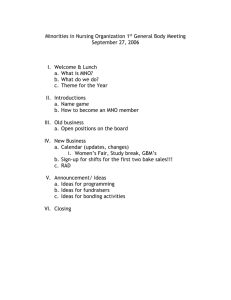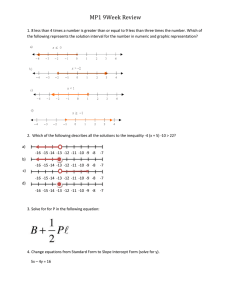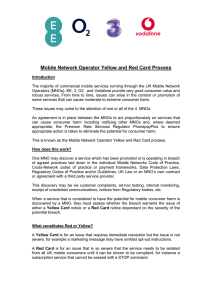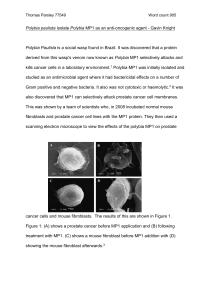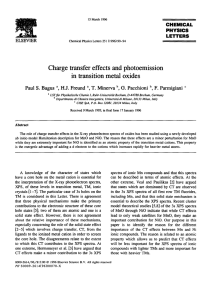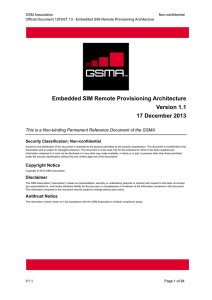12. The Efficient-Market Hypothesis and Security Valuation
advertisement
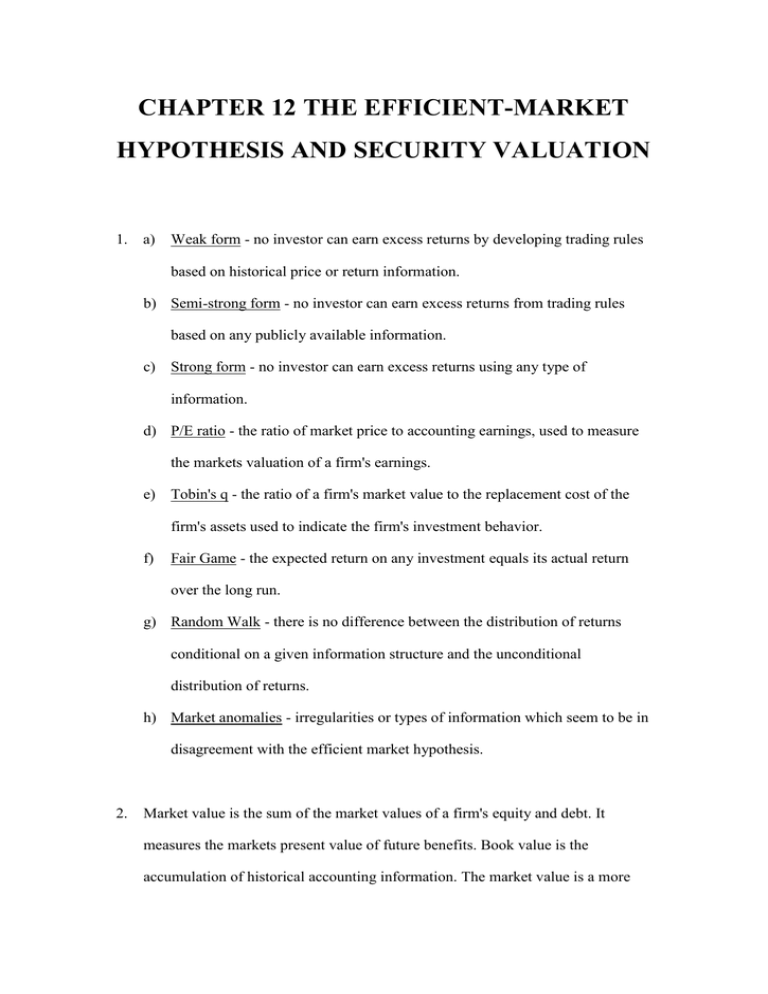
CHAPTER 12 THE EFFICIENT-MARKET HYPOTHESIS AND SECURITY VALUATION 1. a) Weak form - no investor can earn excess returns by developing trading rules based on historical price or return information. b) Semi-strong form - no investor can earn excess returns from trading rules based on any publicly available information. c) Strong form - no investor can earn excess returns using any type of information. d) P/E ratio - the ratio of market price to accounting earnings, used to measure the markets valuation of a firm's earnings. e) Tobin's q - the ratio of a firm's market value to the replacement cost of the firm's assets used to indicate the firm's investment behavior. f) Fair Game - the expected return on any investment equals its actual return over the long run. g) Random Walk - there is no difference between the distribution of returns conditional on a given information structure and the unconditional distribution of returns. h) Market anomalies - irregularities or types of information which seem to be in disagreement with the efficient market hypothesis. 2. Market value is the sum of the market values of a firm's equity and debt. It measures the markets present value of future benefits. Book value is the accumulation of historical accounting information. The market value is a more meaningful measure for the financial analyst. 3. The existence of market anomalies lead us to question the outright acceptance of market efficiency with respect to all types of information. 4. Market Value Price/Share number of shares $8 1 billion 0.8 Book Value Total Equity/number of shares $10 1 billion This indicates that the market doesn't like the quality of ABC's assets, perhaps some of the loans are uncollectible or some of the investments are not very good. Further it may mean the liabilities of ABC reflected the balance sheet may be too 1ow. 5. The P/E of 4 compared to an average P/E of 10 indicates that either ABC's revenues are not of the same quality as revenues of average banks or their expenses are understated when compared to an average bank. Further, the loan losses of $2 may not be sufficient to cover the actual amount of loan losses that ABC may experience in the future. 6. q Firm's Market Value $50+$40 .9 Firm's Replacement Value $100 The market does not place as high a value on the assets of MNO as it would cost to replace them at current prices. This indicates that MNO is not viewed as being a very good firm. Either the present management is not using MNO's assets in the most profitable fashion or competitive pressures in the industry in which MNO is in has made the future prospects of MNO very dim. 7. A Perfect Market is a market that is in continuous equilibrium which means that it responds to new information and provides the correct signals for real economic decisions. In a sense a market can be efficient and not be perfect. It responds to information correctly but does not give correct signals. But a market cannot be inefficient and perfect. Therefore, an efficient market is a subset of a perfect market. 8. The market model allows us to relate the risk and return of an individual security to a market index. This gives us a relative measure of risk and return so that we can test if information has any effect on relative risk and return of individual securities. The CAPM allows us to state how risk and returns are related. If the capital markets are efficient and the CAPM is the correct model, we can use the CAPM to test the efficiency of the market. 9. If the markets are not efficient then the CAPM cannot be a valid model explaining risk and return because the CAPM derivation assumes that the market is efficient. 10. Certis Paribus, the higher the volume of trading for a given security, the more efficient the market is expected to be. Hence, thereby traded issues may not show the same degree of efficiency as heavily traded issues. 11. If these were the only types of insiders who caused the market not to be strong form efficient, then controlling or eliminating them may make the market more strongly efficient. However, there are other insiders whose actions make the market less strong form efficient and if these are not regulated, the strong form efficiency of the market will not increase. 12. Cootner provided empirical evidence that daily stock prices may not be independent. He also provided an explanation of stock market behavior which is not inconsistent with technical analysis. Therefore, gives his theoretical construct and empirical evidence, technical analysis may be justified. 13. 1) Cootner's random walk with reflecting barriers 2) variance bound tests of Shiller and Leroy and Porter 3) market anomalies 14. The weekend effect indicates that prices fall on Friday and go up on Monday. Hence a strategy to take advantage of this would be to only buy on Fridays and only sell on Mondays. If these strategies worked and everybody started to use them, then prices on Fridays would be higher and prices on Mondays would be lower reversing the weekend anomaly. So the strategy would no longer be valid.
